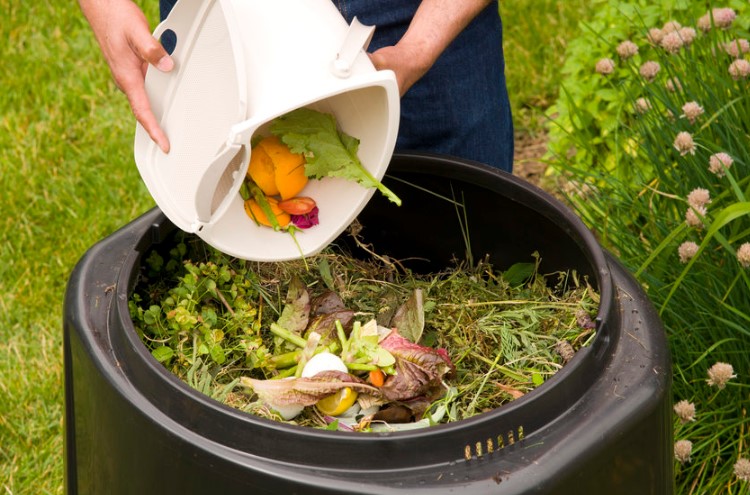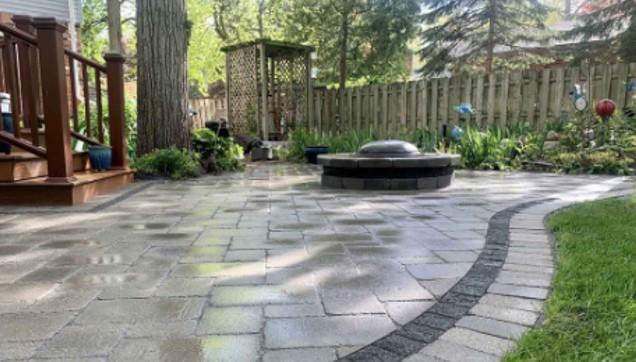YARD AND GARDEN: Some real information about artificial Christmas Trees | Home & Garden

Master Gardener Darla Chouinard talks about the history of the Christmas tree.
Christmastime. It is one of the busiest times of the year! At our Youth Gardening home school workshops last week we read the book “Maple Syrup Season” by Ann Purmell and talked about maple syrup is in a plant part category of its own.
We often discuss the six plant parts we eat and it was interesting to make a whole new category, tree sap. We also made festive decorations from gourds and wooden ornament birdhouses that were generously donated to us. We painted the small gourds to look like snowmen. It’s always amazing to see the creativity the children bring to our activities.
YARD AND GARDEN: Kissing under the mistletoe – A holiday favorite with a dark side
I have been enjoying people’s posts on social media of their special Christmas trees and decorations. They range from handed-down, hand-painted ceramic trees, tall trees, short trees, a fine selection of decorated cone-shaped artsy trees, real trees, and artificial trees.
I recently listened to a podcast by Moxie Labouche (Your Brain on Facts). She talked about the first company to manufacture artificial Christmas trees in the US. I really hadn’t given it much thought before, so I researched it.
I found out that the first artificial trees were made in Germany around 1880 because Christmas trees had become so popular that deforestation was a real problem. They were constructed from goose feathers that had been dyed green, split, then wired together to form branches. The wires were attached to dowels that were used as the trunk and base. These trees weren’t particularly sturdy and couldn’t hold many ornaments.
YARD AND GARDEN: You can do more with a poinsettia than throw it out
In 1930 the Addis Brush Company from the United States created a tree that used bristles that were dyed green to create leaves on the branches. This company was the first to manufacture toilet bowl brushes. Can you picture it now? These popular trees could hold more ornaments and decorations than feather trees.
I remember as a kid, my grandparents had a silver aluminum tree. My grandparents acquired that tree as a hand-me-down and used it throughout the 70’s and into the 80’s. It was sparsely decorated using plain blue glass ball ornaments. They used a lighted motorized color wheel in front of it to make the colors change on the tree. The color wheel was popular because it was dangerous to hang strings of lights on wires conducting electricity on the aluminum branches. You could be in for quite the shock!
Aluminum trees were manufactured in Chicago and were popular in 1958. Last year they trended as a vintage retro look that people were flocking to. Many were in search of antique trees as well as new vintage reproduction trees. Amazon carries them in rose gold, iridescent, silver-glitter pine, and electroplated. They run anywhere from $44.00 to $469.00 and one comes complete with a color wheel.
In the 1980s PVC trees became popular and were fairly realistic. I remember you had to be careful putting the branches into the wooden dowel so that you didn’t break it. We added guy wires from branch to branch to hold up the lower heavy branches that had ruined the dowel holes.
Now you can buy a pretty decent sturdy pre-lit tree that ranges in price from $104 on average to over $1,000. They are made from fire-retardant PVC. Some of the benefits of artificial trees are that they cause fewer allergies and asthma, they don’t shed lots of dead needles, they don’t need to be watered, and you can leave them decorated as long as you wish.
They do have a few drawbacks. For example, sections of the pre-lit lights will eventually go out, then what? Troubleshoot your tree or get a new one? Most people average 7-10 years of reusing their artificial tree. Approximately 67 percent of households use an artificial tree and 80 percent of the artificial trees are made in China.
Real trees take 7 to 10 seasons to grow an average tree. They must be pruned yearly so they maintain that festive shape. Real Christmas trees growing on United States tree farms account for 350 million trees and are grown on 350,00 acres. The top leading states that grow Christmas trees in the U.S. are North Carolina and Oregon.
The first retail tree lot was started in New York in 1851 by a man named Mark Carr. They were also available in Chicago from 1887-1933 when a fishing schooner called the “Christmas Ship” docked at the Clark Street Bridge and sold spruce trees from Michigan.
It is good to shop for locally grown trees as it helps out the local economy, they are grown as a crop specifically to be used during the holidays. Not only do they hold the soil in place, they also take in carbon dioxide and other harmful greenhouse gases and release fresh oxygen into the air.
We have a fresh tree in the main part of the house because we really like the scent it gives off, and they are reasonably priced and it’s pretty. But we have also used the same bare-bones, unlit, $20 tree for about 15 years in our Christmas party room. Whatever style you choose, make festive memories.
My Town: Clint Walker’s memories of Coles County as pulled from the archives
Cosmic Blue Comics

From the Nov. 22, 1992, Journal Gazette, this photo of Cosmic Blue Comics in Mattoon; where I spent virtually every Saturday afternoon for about two years. That small back room you see just off to the right of the Coca-Cola sign was where they kept the many, and I mean many, long-boxes of back issues. I still own my bagged copy of “Tales of the Beanworld” issue No. 1 that I found back there. Sadly, this location is now just a “greenspace”.
Mattoon Arcade

Pictured, Shelbyville’s Bob Murray from the June 2, 1982, Journal Gazette, displaying his dominance over the TRON arcade game at the “Carousel Time” arcade at the Cross County Mall, later to be the Aladdin’s Castle, soon thereafter to be not a thing anymore. I spent just about every Saturday at that arcade, perhaps with that exact same haircut. No overalls, though. I was more of an “Ocean Pacific” kind of kid.
Icenogle’s

Pictured, from the Nov. 28, 1988, Journal Gazette, Icenogle’s grocery store. Being from Cooks Mills, we didn’t often shop at Icenogle’s…but when we did, even as a kid, I knew it was the way a grocery store is supposed to be in a perfect world, and that’s not just because they had wood floors, comic books on the magazine rack, or plenty, and I mean plenty, of trading cards in wax packs.
Cooks Mills

I had long since moved away from Cooks Mills by the time this Showcase item about Adam’s Groceries ran in the June 13, 1998, Journal Gazette, but there was a time when I very well could have been one of those kids in that photo; for if it was summer, and you had a bike, and you lived in Cooks Mills, that’s where you ended up. At last report, they still had Tab in the Pepsi-branded cooler in the back. I’m seriously considering asking my money guy if I could afford to reopen this place.
Mister Music

Pictured, from the July 16, 1987, Journal Gazette, this ad for Mister Music, formerly located in the Cross County Mall. I wasn’t buying records at that age, but I would eventually, and that’s where it all went down. If you don’t think it sounds “cool” to hang out at a record store with your buddies on a Friday night, a piping-hot driver’s license fresh in your wallet, you’d be right. But it’s the best a geek like me could do. Wherever you are today, owners of Mister Music, please know that a Minutemen album I found in your cheap bin changed my life.
Sound Source Guitar Throw

Portrait of the author as a young man, about to throw a guitar through a target at that year’s Sound Source Music Guitar Throwing Contest, from the April 18, 1994, Journal Gazette. Check out my grunge-era hoodie, and yes…look carefully, those are Air Jordans you see on my feet. Addendum: despite what the cutline says, I did not win a guitar.
Pictured, clipped from the online archives at JG-TC.com, a photo from the April 18, 1994, Journal Gazette of Sound Source Music Guitar Throwing Contest winner, and current JG-TC staff writer, Clint Walker.
Vette’s

Here today, gone tomorrow, Vette’s Teen Club, from the June 20, 1991, Journal Gazette. I wasn’t “cool” enough to hang out at Vette’s back in it’s “heyday,” and by “cool enough” I mean, “not proficient enough in parking lot fights.” If only I could get a crack at it now.
FutureGen

FutureGen: The end of the beginning, and eventually, the beginning of the end, from the Dec. 19, 2007, JG-TC. I wish I had been paying more attention at the time. I probably should have been reading the newspaper.








